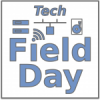Some weeks ago I was invited to as a delegate at the first edition of Data Field Day (#DFD1) event, scheduled in May 13–15, 2015 in California (Silicon Valley and San Francisco).
 Data Field Day event purpose was to cover different topics from others Technical Field Day events: from big data to analytics to hyperscale architecture and cloud security, and all waves of innovations that are transforming the IT. A new format for some growing trends, including micro-services, mobile and the Internet-connected world.
Data Field Day event purpose was to cover different topics from others Technical Field Day events: from big data to analytics to hyperscale architecture and cloud security, and all waves of innovations that are transforming the IT. A new format for some growing trends, including micro-services, mobile and the Internet-connected world.
As written in a previous post not all presentations where completely in topic: some where too much storage oriented. But for the first edition of #DFD1 this was acceptable. Cloudera was one of the cases where this issue was not present.












